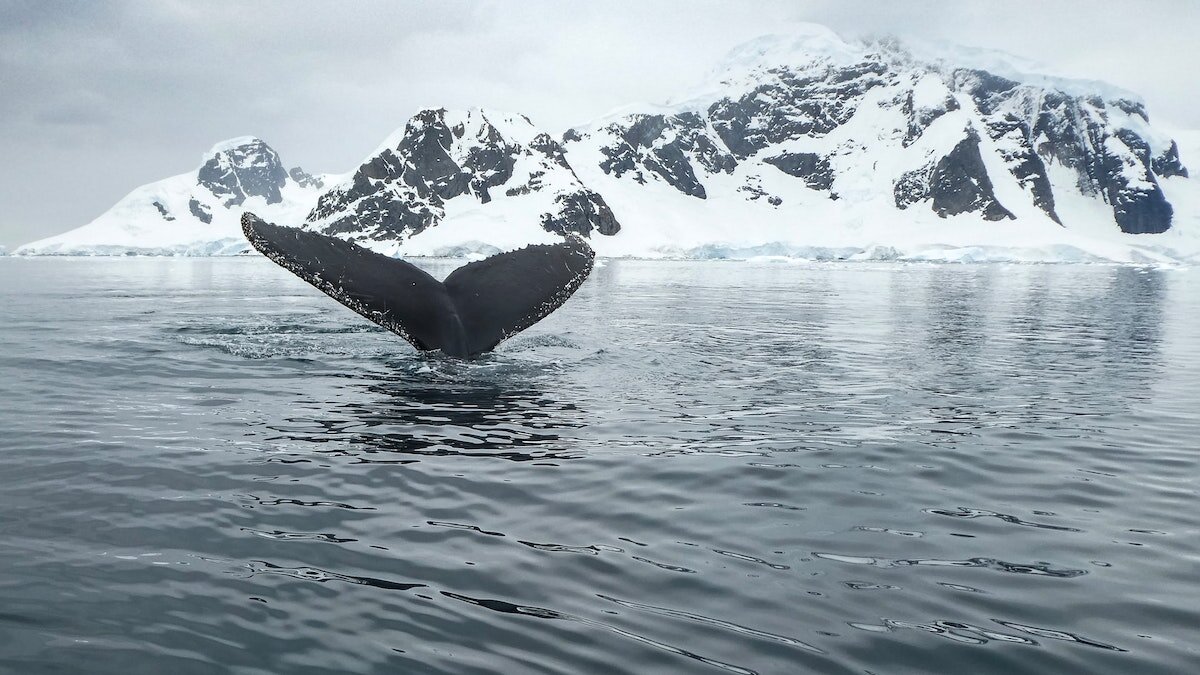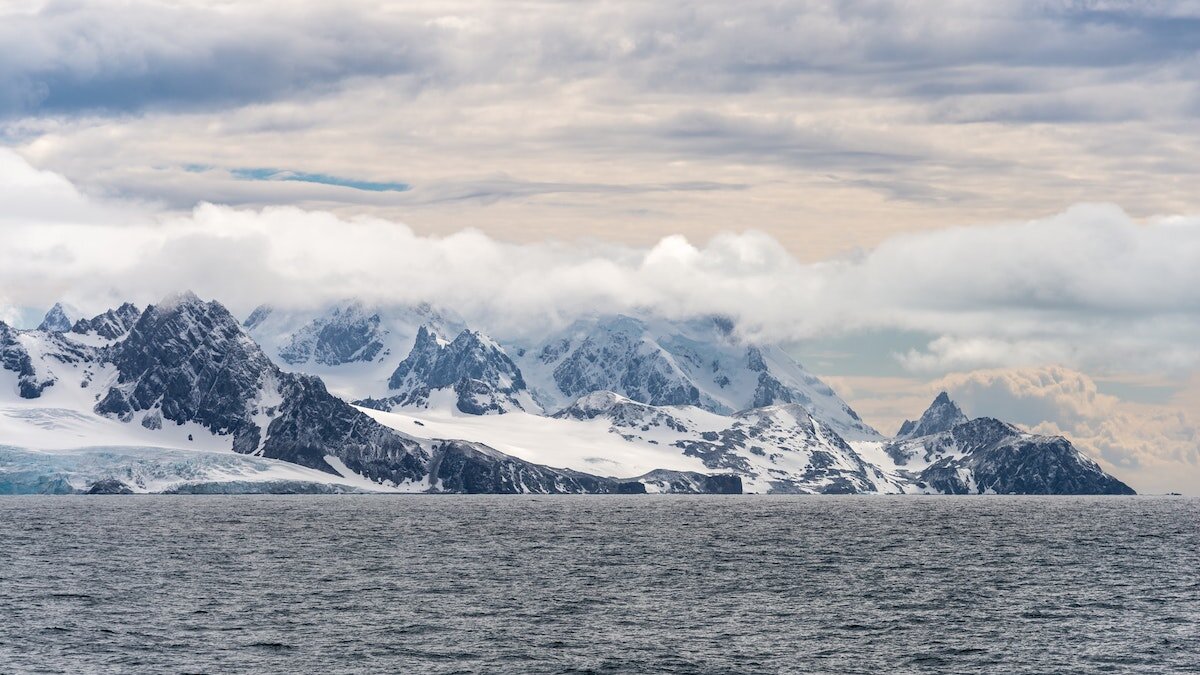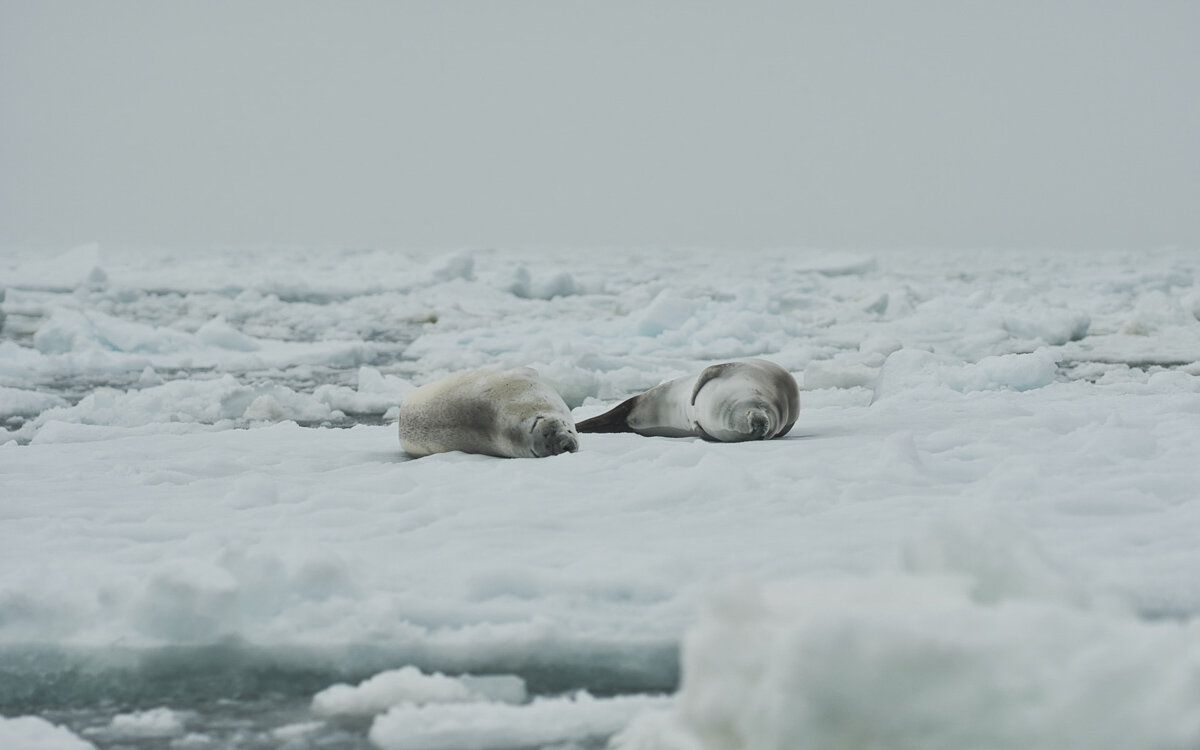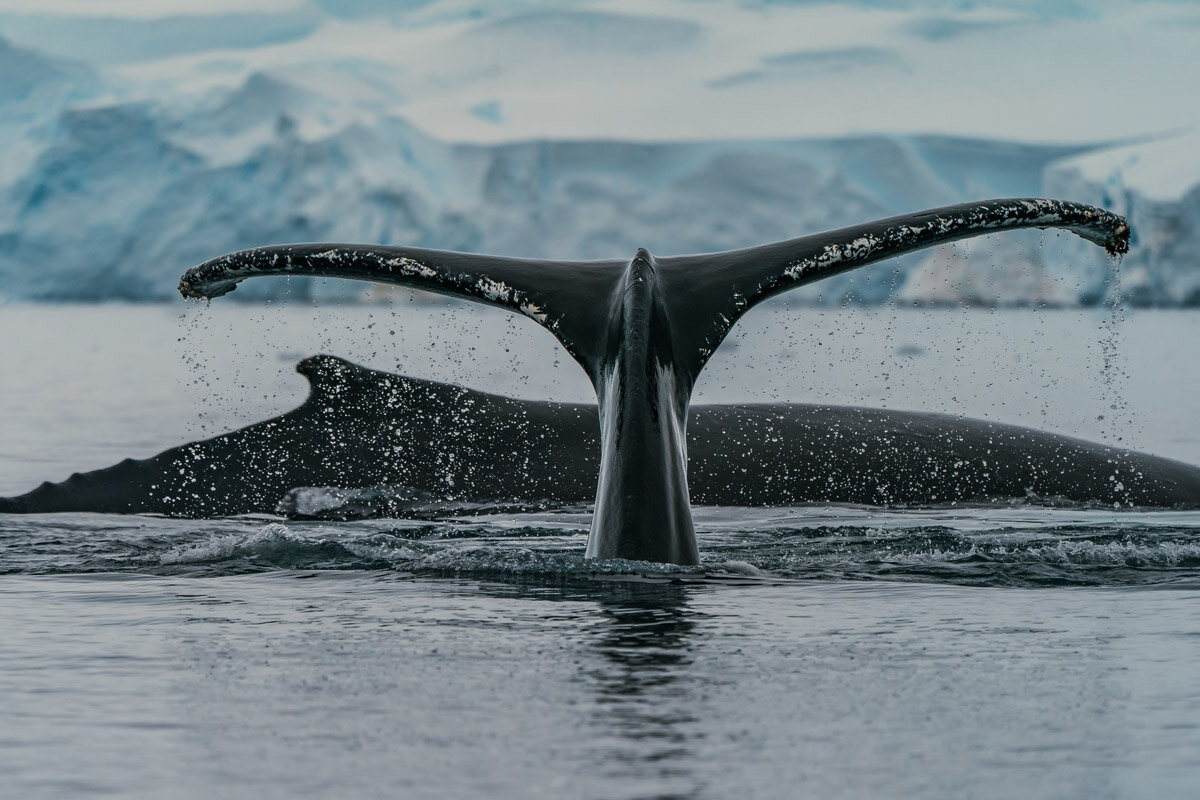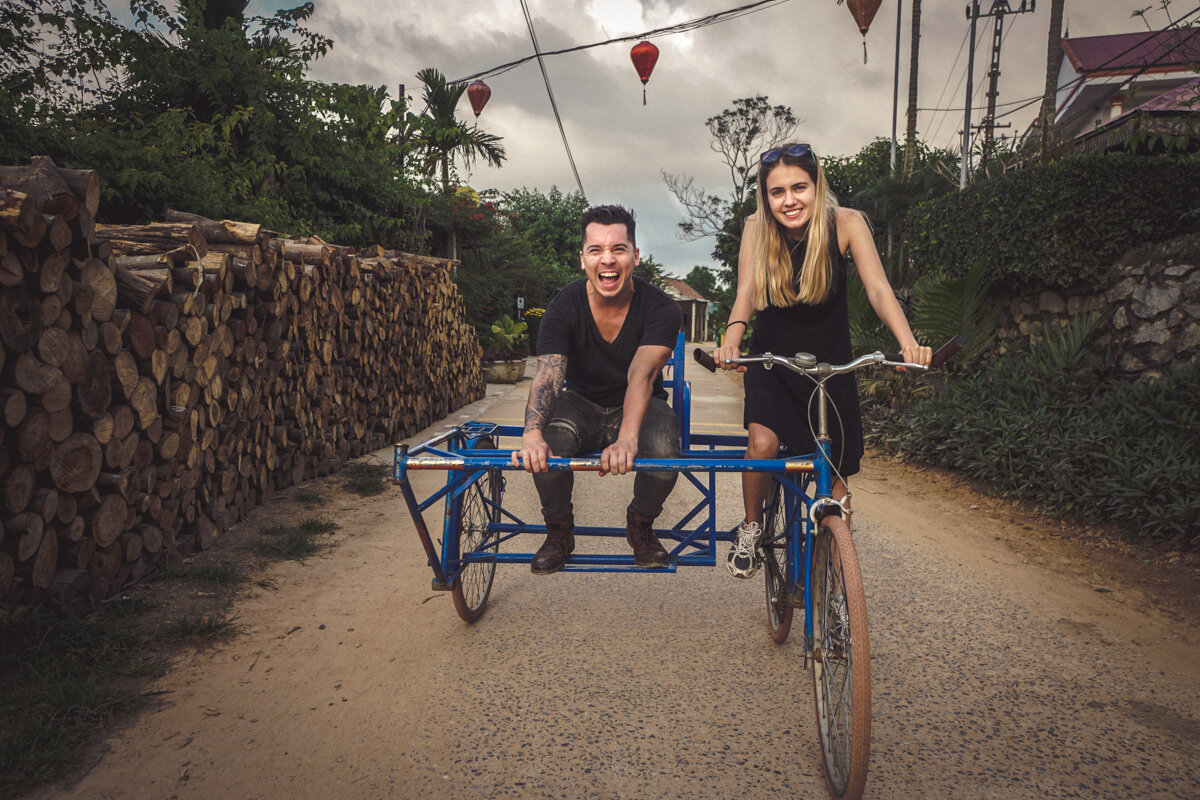Traveling to Antarctica: Was It Worth It?
/This decision came to us pretty randomly when we were traveling around South America for six months. We'd just finished hiking in Torres del Paine in southern Chile when we realized that we were probably as close to Antarctica as we were ever likely to be. It was the right time of the year to visit. Antarctica had been on our dream list forever. And, as if all of that wasn't enough, my birthday was coming up. How could we possibly ignore all these signs?
We immediately started researching to see whether it would be possible to get two places on one of the small ships offering Antarctic cruises. We were fortunate, and within a week, we were boarding the MV Andrea on our way to the Antarctic Peninsula. How exciting!
Arriving at the Antarctic Peninsula
I think our excitement is understandable when you look at some of the photos I've included in this post.
Of course, although we booked everything up very quickly and ended up on a great boat to Antarctica for a truly remarkable trip, there was a big element of luck in this as we managed to get a last-minute cancellation.
We don't recommend this approach as it carries a significant risk of disappointment. A trip to Antarctica really is a trip of a lifetime, and unfortunately, due to the costs involved, you are probably only going to go there once. So it's imperative to get the trip right. Here are some of the things we learned from our trip to Antarctica. We hope they are of some use to you. I've also included a few photos amongst Antarctica travel tips to help you see what it's really like.
When should you cruise to Antarctica?
No travelers visit Antarctica during the southern hemisphere winter. Most vessels only offer tours from November to March.
So, which month is the best? First, let's look at what the official guidance says about when to go:
Antarctica in November: It is a good time to see the penguins mating, even though other wildlife is not as plentiful as later in winter. The temperatures are colder and polar ice keeps breaking up, so access to some areas may be limited. You will see pristine snowy landscapes and unimpacted landing areas as they get muddy later in the season.
Antarctica in December, January, and Early February: The best time to visit to see the variety of wildlife, especially penguin chicks, with up to 20 hours a day of sunlight. The boats, however, are the most crowded during this time.
Antarctica during Summer, Mid-February, and March: This is the best time to spot whales, but other sea wildlife is less likely to show up. The tours are less crowded and you can venture further south as polar ice melts.
It's essential to bear in mind that many vessels have different rates for the same itinerary at different times of the year. You are most likely to find better deals on cruises at the very beginning or end of the season. However, you will probably see less wildlife and have limited access to the continent itself.
Antarctica in February
We traveled to Antarctica at the start of February. For me, the presence of the baby penguin chicks was a real highlight, and I wouldn't have wanted to miss it. We saw plenty of whales on our trip, so I don't feel that we missed out on anything.
Good Weather
We also had mostly good weather during our time in the Peninsula. Good weather is by no means guaranteed even at the height of the season, but a little bit of sunshine will make a spectacular difference to your photos and to your overall experience. The longer days were also great. We did one of our landings late at night and enjoyed the midnight setting sun.
Don't get me wrong, I'm sure that whenever you go to Antarctica, it will be a fantastic experience but make sure you actually make a conscious choice about the time of the year you want to go to ensure that it coincides with the things you are most interested in.
Penguin chicks
The young chicks were typically more curious about us than their parents. When you are on the Peninsula, you cannot approach the wildlife and disturb them, but if you stay still, they will often approach you. It's a truly extraordinary experience.
Which type of boat should I choose?
One of the most important choices you will make will be the type of ship you want to go on. This will dictate the whole personality of your trip. There are three main types of boats that offer trips to Antarctica:
Expedition Ships: The smallest vessels, most of which are converted Russian research ships, which normally carry around 50-150 passengers.
Cruise Liners: Yes, full-size cruise liners with all the amenities offer trips to Antarctica. However, be careful – some of these ships don't offer actual landings; they just cruise offshore. How disappointing would that be? If they do offer landings, then in most landing places on the Peninsula, the number of people allowed to land at any one time is restricted to 100 to limit the impact on the environment. So, on a large ship, each passenger would only be able to go on a limited number of landings.
Icebreakers: These go the furthest south. The other boats are ice-strengthened but aren't specialized for forcing their way through miles of pack ice. Icebreakers are usually more basic in terms of their comfort levels and can go deep into the Ross and Weddell Seas. They are the longest and costliest of Antarctic cruises, and for most people, are way outside their budget and available vacation time.
We would probably recommend that you focus your research around the expedition vessels unless you have very specialist requirements. They offer quite an intimate, authentic experience of Antarctica but still provide adequate levels of comfort.
Try and find one you like, which carries 100 passengers or less. That way, you will have no problems with the landing limits, and it won't take too long to get everyone in and out of the zodiacs for the landings.
MV Andrea An expedition ship
You need to be aware that the smaller the boat you choose, the more it will get tossed around in the rough seas of the Drake Passage, so you need to select a ship that can handle those types of seas.
Zodiacs are used for all landings. Here are the zodiac crafts that are used for all landings onto the Antarctic Peninsula. The MV Andrea had a full fleet of zodiacs, which is really important as it determines how long it takes everyone to get onto and off the Peninsula. You don't want to be hanging around for ages waiting for your turn to go across.
Full training is given for how to get into and out of the zodiacs, which comes in very useful when you are in choppy waters. This is definitely not a place where you want to end up unexpectedly in the water.
What Antarctica itinerary should I choose?
Your itinerary will be determined to a large extent by when you want to go, how much time you have, and, of course, your budget. We did a 10 day 9 night cruise, and it felt like the right amount of time. We could have happily spent another couple of nights on the ship, so I think a slightly longer itinerary wouldn't have been a problem.
Remember, when you are planning a trip to Antarctica, you need to allow enough time to get to Ushuaia. The weather in that part of the world can be unpredictable, so it's best to get to Ushuaia with 1-2 days to spare just in case of any last-minute cancellations of flights etc.
Our Itinerary:
Day 1 Ushuaia, & Beagle Channel.
Day 2-3 Drake Passage Crossing
Day 4-7 Antarctic Peninsula
Day 8-9 Drake Passage Crossing
Day 10 Ushuaia. Disembark
From Ushuaia to the Drake Passage
We sailed out of Ushuaia in the evening, and most of the first night was spent in the Beagle channel, which is very calm and protected.
By the time you hit the Drake Passage, chances are you will be in big seas. Most of the passengers on our boat suffered from seasickness during the first day. I think the secret is to take seasickness tablets before you go to bed that first night even though you think you don't need them.
Antarctic Peninsula
It takes the best part of the next two days to get to the Antarctic Peninsula, and for the most part, there is not a lot to see along the way. On most of the expedition ships, you will be kept entertained with presentations about the Antarctic and its wildlife. These were really good and really informative, so make sure that the boat you choose offers a full program of lectures as they really help you to get a lot more out of your trip.
Once we got to the Peninsula, it was full-on.
Landings on the Antarctic Peninsula
Most days we did two landings. One early in the morning, then while we were having lunch, the ship would move to another part of the Peninsula, and we would do a second landing in the afternoon. Each landing typically lasted two to three hours, so you had plenty of time to explore and take as many photos as you like. On one of the days, we squeezed in three landings, which allowed us to be on the Peninsula late in the evening with the sun setting around midnight. Just fantastic.
Obviously, the landing schedule is a little dependent on the weather you encounter when you are down there, and each captain will have to adjust the program to ensure the safety of all of his passengers. However, when you are choosing your itinerary, make sure you get a detailed understanding of the usual landing schedule as the landings will really be a highlight of your trip.
So the itinerary is not just about the route, it really is all about how many different opportunities there are to go ashore and how much time you get to spend ashore.
Late-night landing. Spectacular midnight sunset
Antarctica vacation cost
This question is really like asking "how long is a piece of string?". The costs vary dramatically depending on the boat, the itinerary, and when you are going. I think you have to budget a minimum of US$4,000 per person twin share, but depending on the choices you make, it can be as high as US$20,000 per person. The price covers everything from the moment you get on the boat, but it does not include tips. Most boats give a tip guideline of US$10-15 a day per person, which can add another little hefty chunk of money to the overall cost of the trip.
Our trip came in at the lower end of the price scale, and we certainly didn't feel like we missed out on any comforts. The cabins were comfortable. Not overly large but very comfortable and spotless. The food was fantastic and we both definitely put on weight on the cruise despite our active days. As for the crew, they were really professional and knowledgeable, they all obviously loved Antarctica, and they went out of their way to make sure our experience was as good as it could be. We were happy to leave generous tips at the end of the trip as we both felt they had worked so hard for us throughout the trip.
Our experience would say that there are some very good boats and very good trips at the more affordable levels and you don't have to choose a top-end priced boat to have a great trip. Just make sure that you check out the latest reviews for any boat that you are considering booking as service levels can change.
You can capture the wildlife on film. Thank heavens you don't capture the smell
Who should I book with for the best Antarctica cruise experience?
There are a lot of good companies offering Antarctic cruises. We booked with Expeditiontrips.com and found them to be very good. We got their name out of Lonely Planet. If you want a whole list of companies to have a look at, I would probably start with the Lonely Planet book on Antarctica. Then follow that up with some additional research on the internet to get to a shortlist. We also used the Lonely Planet book as a good source of information on Antarctica's history, itinerary backgrounds, clothing needed, etc. It's a very good all-around reference.
If you are thinking about getting this book, or just having a closer look at it, you can simply click on the amazon link below that's right for your location.
Do I need special insurance?
We were advised by our tour company that we needed to take out special insurance that would cover us for an emergency evacuation. In fact, I think we weren't allowed to book the cruise without proof of this coverage, although my memory is a bit hazy about this. In any case, you definitely want to have this type of insurance. No-one got into any medical difficulties on our boat, but if it did happen, you are a very long way from any real medical facilities and you would want to know that rapid help is on its way.
Do I need to be really fit to go on an Antarctic cruise?
Although you don't need to be in excellent fitness to join an Antarctic cruise, you do need to be in good overall health. These areas are remote, and you won't have access to modern medical facilities. Tour operators advise that you should not join an Antarctica cruise if you have a life-threatening condition or one that requires extensive medical attention. That said, the trip does not have to be overly physically demanding. You can opt-out of some of the shore excursions if you find them too much or stay close to the landing site and only do limited exploring when you go ashore.
On our boat, we had a full range of ages and a full range of fitness levels, and everyone seemed to cope really well. The day we did three landings in one day was too much for some people, but other than that, almost everyone was happy to do every landing.
Are these trips suitable for kids?
It depends. Some vessels have minimum age requirements ranging from 6 to 12. Other ships leave it up to the parents to decide whether or not the cruise would be appropriate. The dramatic landscapes and unique wildlife can be fascinating for children. However, the sea voyages are long and could be a bit much even for the best child traveler.
It's unlikely there will be other children on board for your kids to play with, so be sure to bring plenty of entertainment options along. You may also want to consider upgrading to a larger room or suite to give kids more room to spread out. Standard cabins are typically tiny. Finally, as I've mentioned before, there is no access to medical facilities.
On the cruise we went on, there were no children.
Are these trips a good choice for solo travelers?
Absolutely! Most vessels have special single rates or can arrange a shared room at no additional cost. The majority of Antarctica visitors still travel as couples or families, but the relatively small groups and long voyages onboard allow travelers to meet others with shared interests easily. We found mealtimes a great time for meeting other passengers. We would deliberately choose a table where we didn't know anyone and just get chatting. The fact that you are all there visiting Antarctica and you have just come back from the latest landing on the Peninsula or just attended one of the lectures makes chatting to new people so easy, and everyone was very friendly and open.
What wildlife can I expect to see?
What animals live in Antarctica anyway? Well, I can only tell you what we experienced. We saw penguins, albatrosses, giant petrels, elephant seals, leopard seals, humpback whales, pilot whales, research stations, an old whaling refinery, mountains, glaciers, icebergs, pack ice, midnight sun; the list just goes on and on…
We had sun, snow, rain, and fog, so we saw some of Antarctica's different moods, and the scenery takes on a completely different aspect as the weather changes. We took hundreds and hundreds of photos so that sometimes we look at them and say why on earth did we think we needed to take another, largely identical shot, of that same penguin, but I guess in the moment we just got carried away.
What might surprise you while traveling in Antarctica?
Never in my life did I expect to swim in Antarctic waters. What a surprise!
On our final day on the Peninsula, we went for a QUICK dip in the Antarctic waters. It was at a landing called Deception Bay, which is a live volcanic caldera. You run in, swim a few strokes in the ICY water (that is about all your body can take as it is soooo cold), and then you retreat to where the staff have dug a hole in the shallow sands, and scalding hot water comes up through the sands so you go and get your breath back in a natural hot spa. How amazing is that?
Was it all worth it visiting Antarctica?
Without a shadow of a doubt! Before we went, I was much keener to go than my partner. I think now, having been there, he would be the first one to sign up and go again. Unfortunately, our travel budget can't quite run to a second trip; otherwise, we would both be there in a flash. The guides on our boat had been coming back to Antarctica season after season, and they all said it just kind of gets into your blood and calls for you to return.
If you ever get the opportunity to go to Antarctica, then make sure you leap at it. It is truly a trip of a lifetime.
I hope this blog has been useful with your planning for all of you that are thinking of going to Antarctica. There are many other useful snippets of information I could have put into this post, but I didn't want to make it too long, so if you have any genuine questions, just leave me a comment, and I'll get back to you and help if I can.






